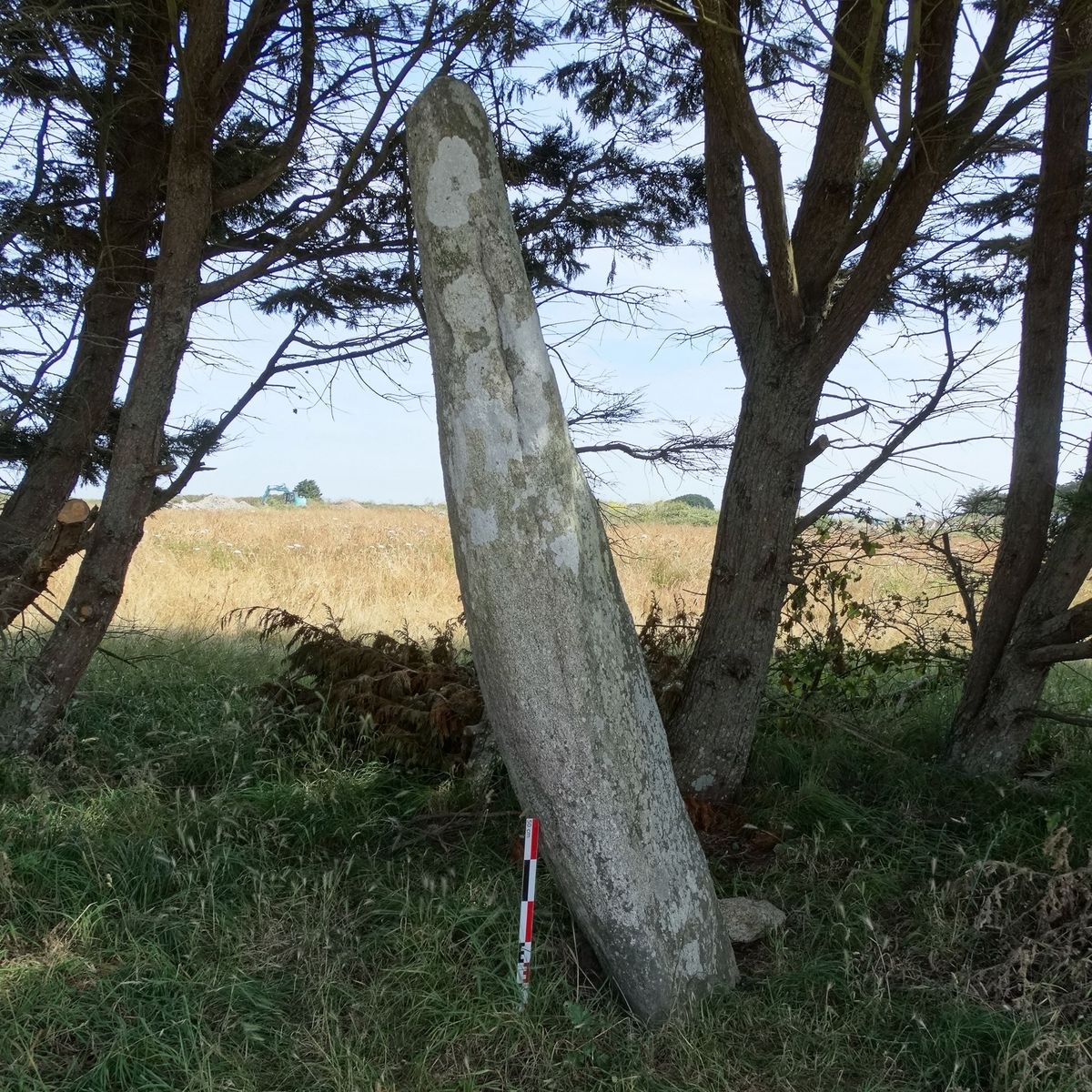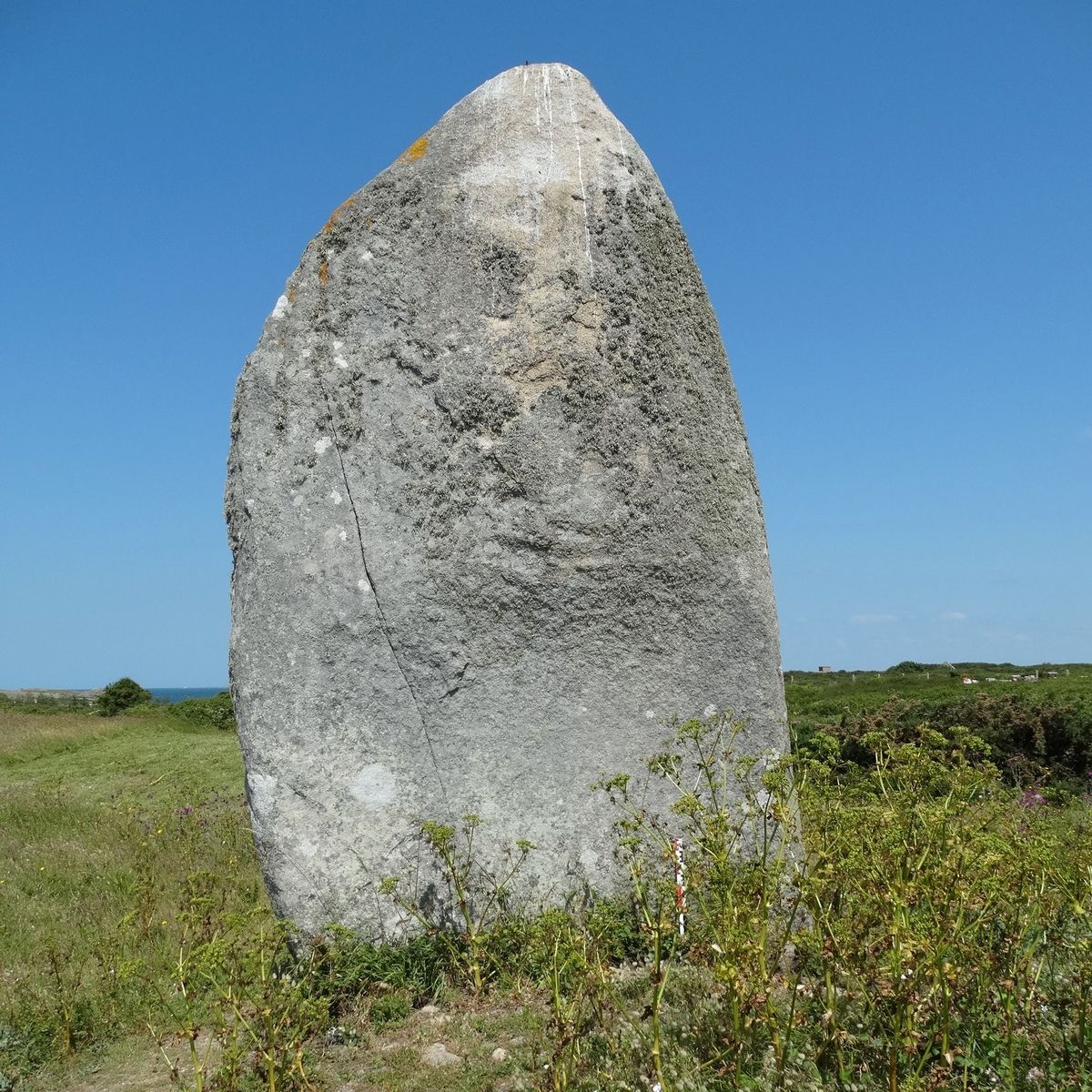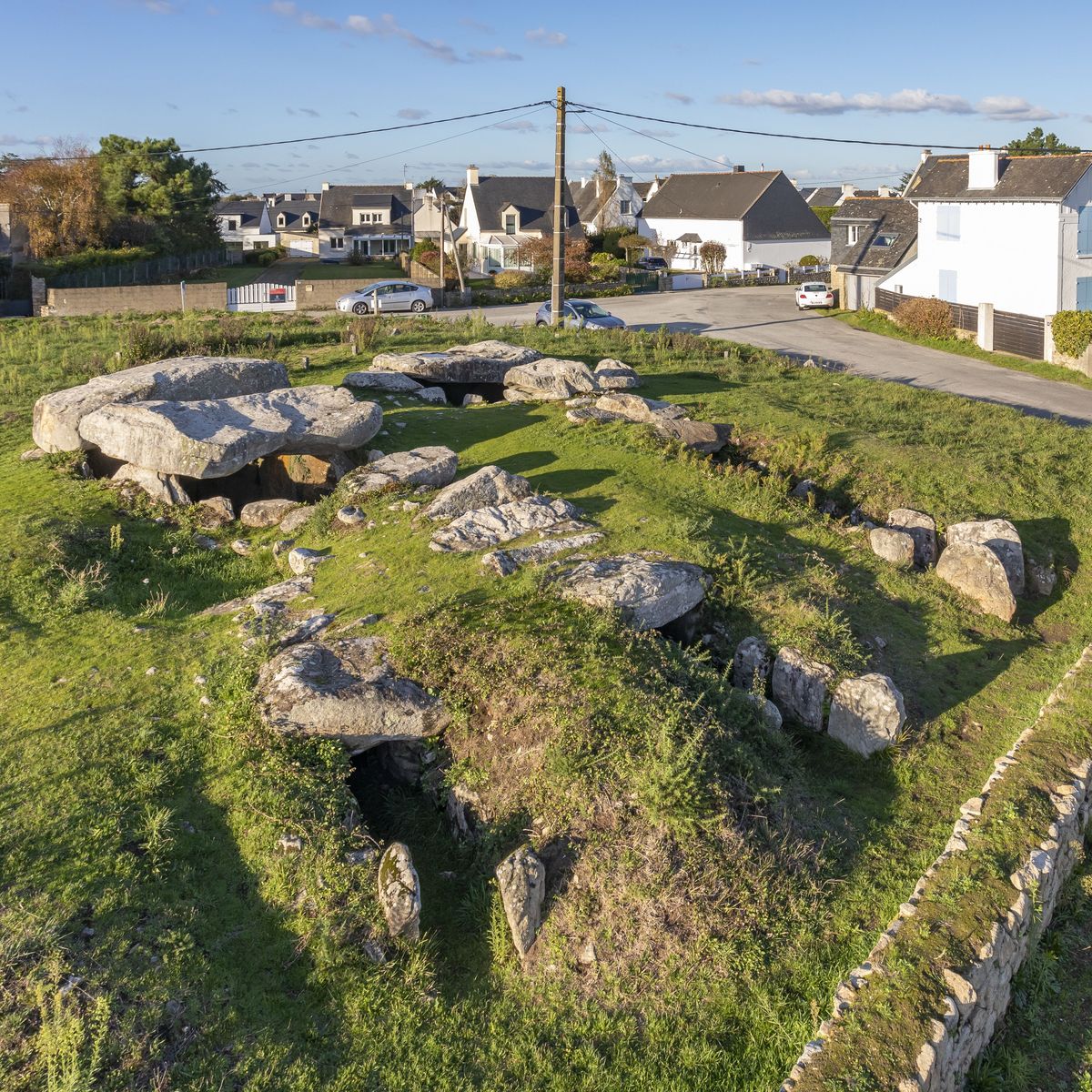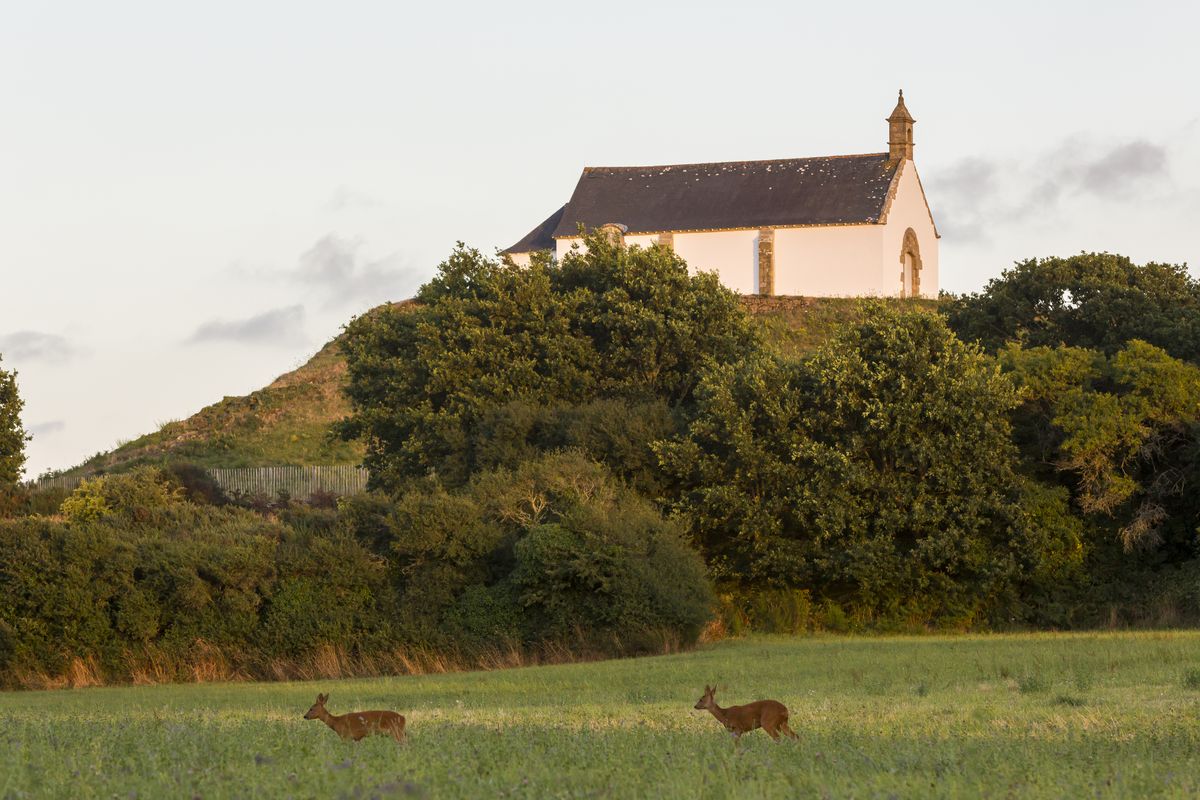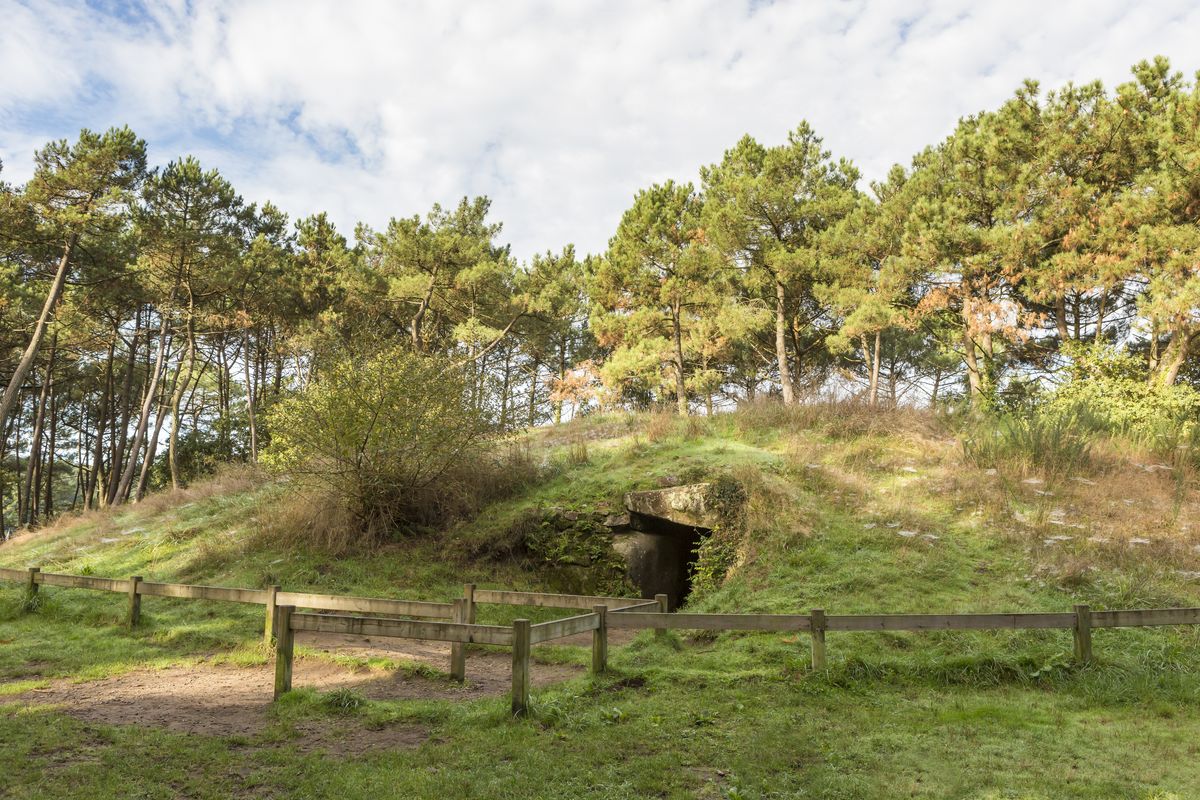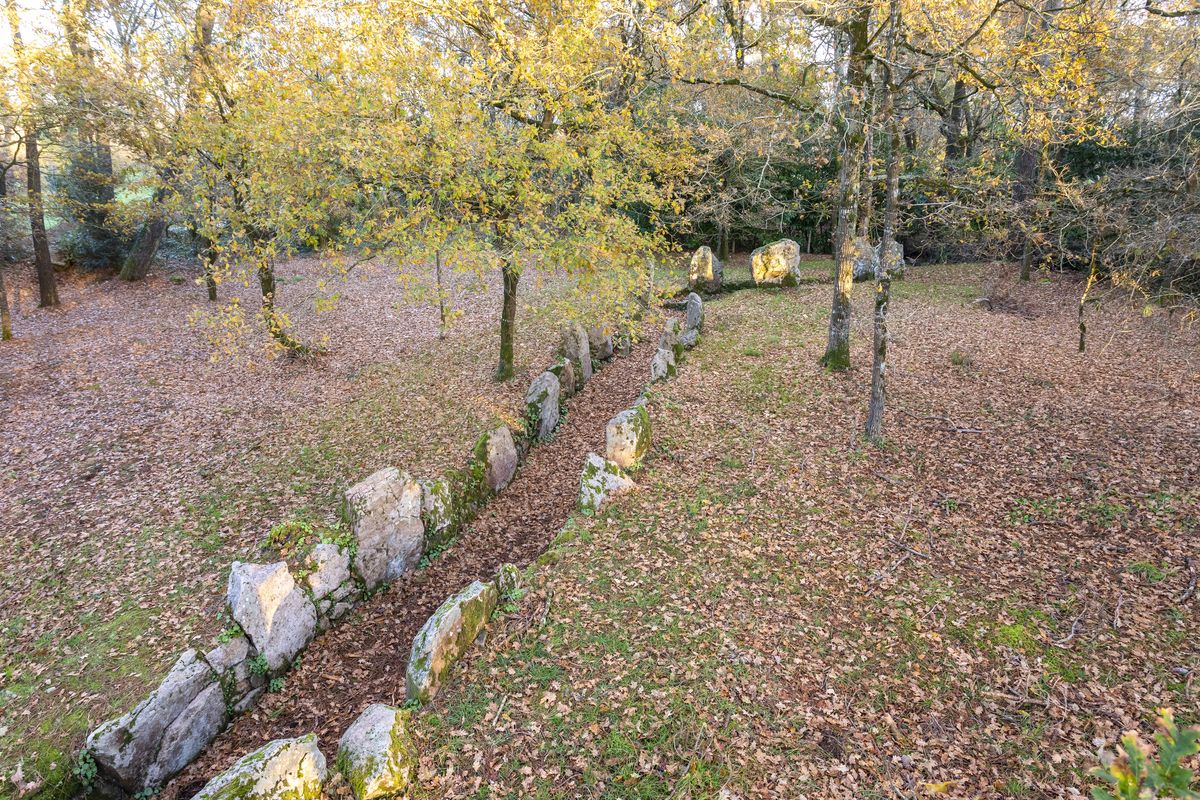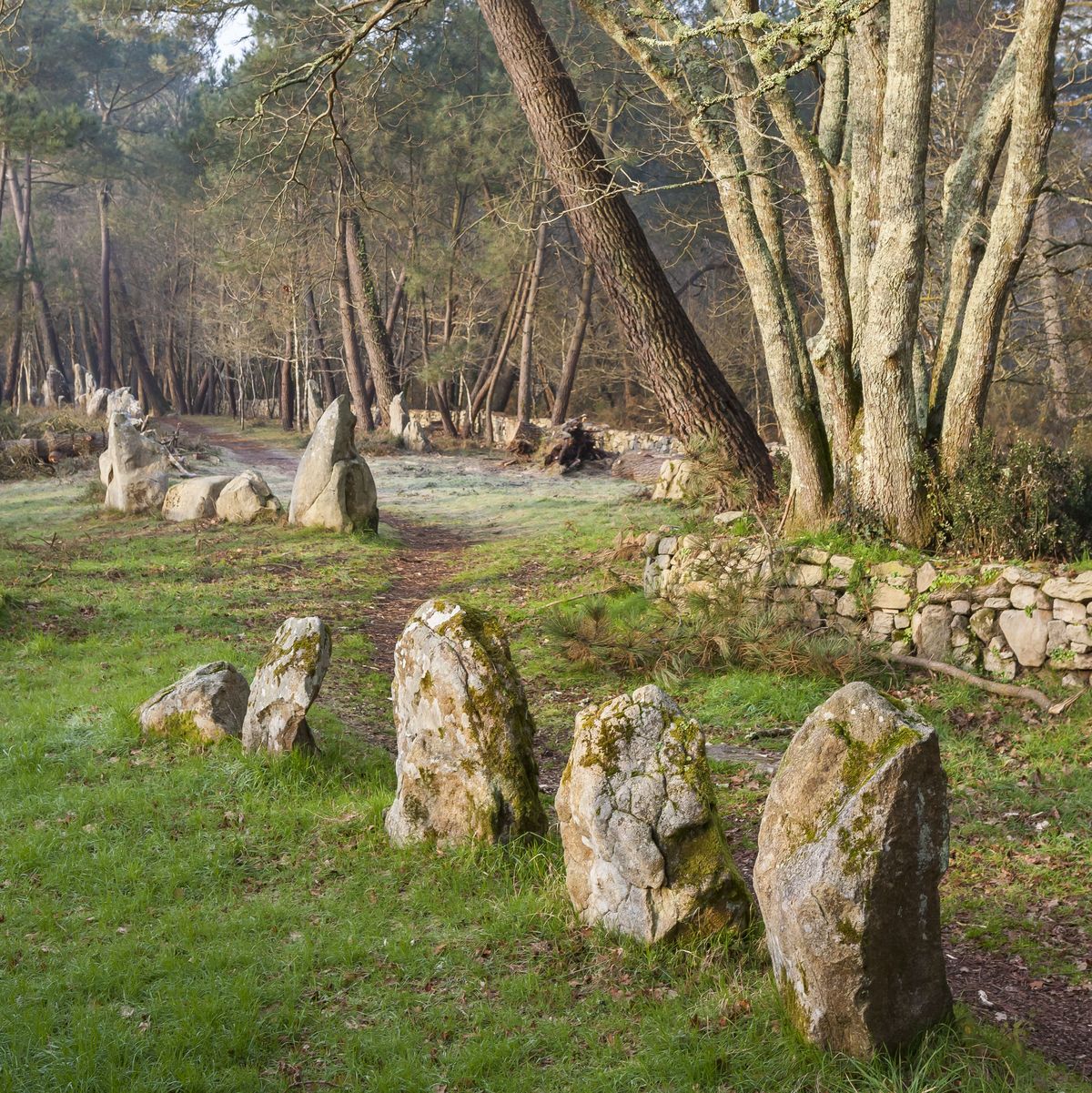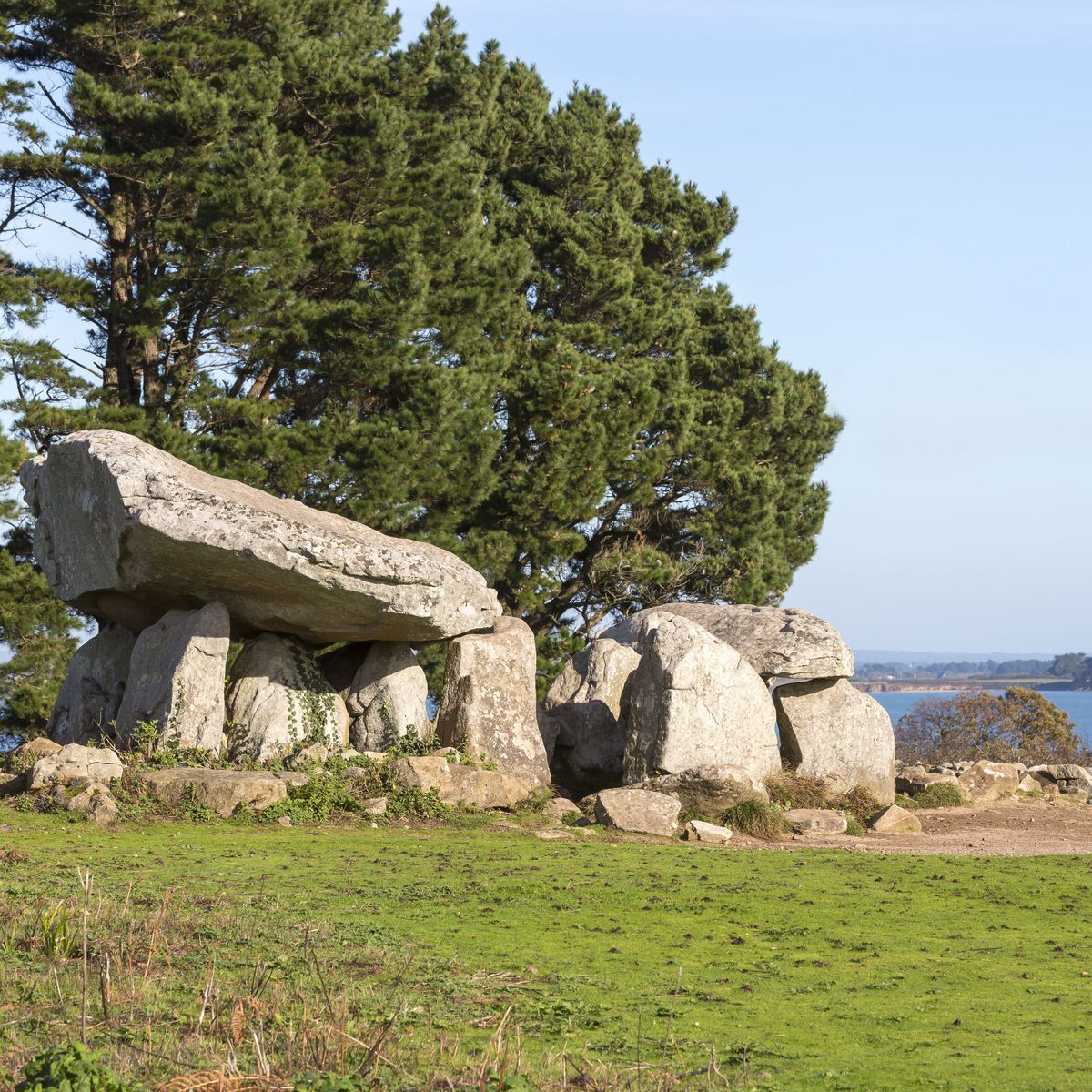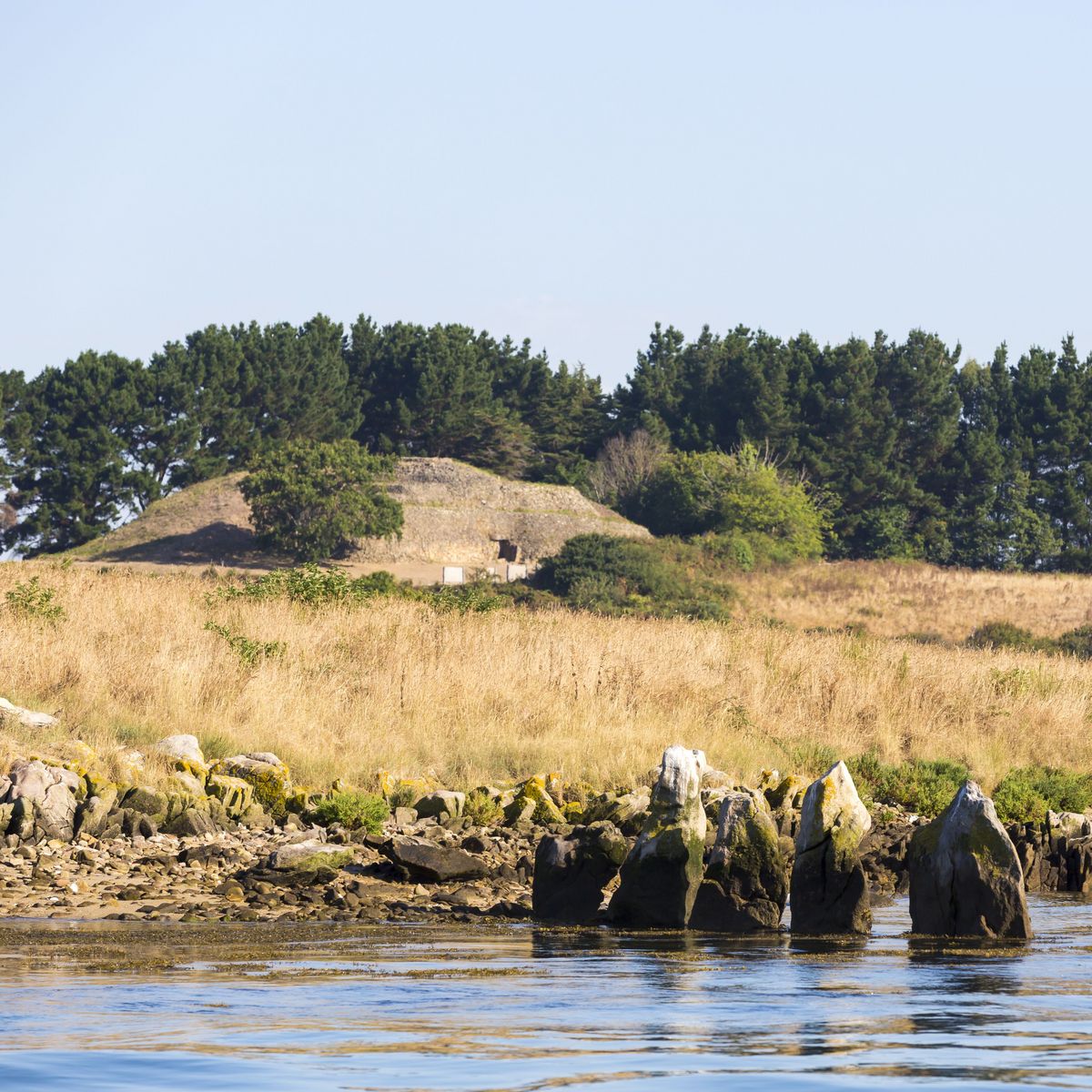Page under construction, thank you for your patience
This page presents the texts and photographs seen on the audio device "Megalith memories" available on site during the Escales Photos festival.
A land of stones to fire the imagination
There are megaliths in every municipality in the area. Their sheer size has helped define the landscape since Neolithic times, so much so that they are part of locals’ daily life – and awe-inspiring for visitors. These large stones never fail to impress. They are intriguing, impressive, and mysterious, inspiring legends and religious practices: stone worship, the legend of Saint Cornély in Carnac, rocks belonging to fairies, korrigans, and more besides. The alignments can also serve as sea marks for sailors, grazing areas for farmers, or simply as playgrounds for children. They contribute to the identity of the territory and that of local residents. What about you? How do you feel about megaliths?
The Glaneurs de mémoire association specialises in collecting memories of events, customs, lifestyles, and cultural practices and then raising awareness of these through different art forms. On behalf of Paysages de mégalithes, the Glaneurs sought out people from communities participating in the Escales Photos festival and within the scope of the UNESCO World Heritage application for the Carnac and Banks of the Morbihan megaliths.
Megalith memories offers an opportunity for you to hear to these inhabitants’ stories as they share memories and anecdotes, and describe how they feel about their special neighbours, the megaliths.
To complete the audio experience, an exhibition by artist Israel Ariño features photo portraits of the people we recorded.
Happy listening!
Super-size prehistory
The word megalith comes from the ancient Greek words mega (large) and lithos (stone). It means a monumental piece of architecture comprising one or more blocks of stone. One exceptional area, stretching from the Etel Ria to the Rhuys peninsula, from Pluneret to the Quiberon peninsula, and round the islands of Houat and Hoëdic is home to over 540 megalithic sites! They include the oldest and most imposing monumental architecture in Western Europe and date back to the Neolithic – the Prehistoric period during which people gradually abandoned their nomadic lifestyle and began to take up livestock and arable farming. In Brittany, this period dates back to somewhere between 4500 and 2500 BCE.
The tumuli at Saint-Michel in Carnac, Mané-er-Hroëck in Locmariaquer and at Tumiac in Arzon date from around 4500 BCE – that’s two thousand years before the pyramids at Giza!
The great menhir at Locmariaquer, which now lies broken on the ground, is believed to have weighed a massive 330 tonnes when whole. Even more remarkable is the fact that it was just one of an alignment of 19 standing stones that have now disappeared.
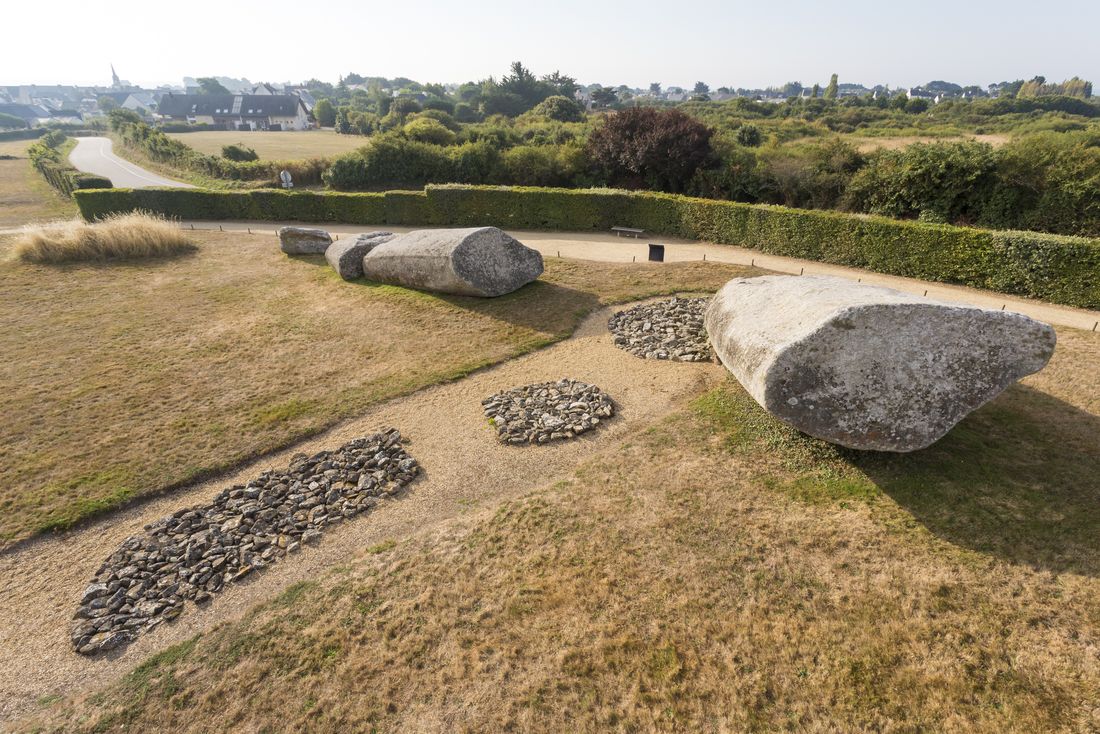
Dolmens and gallery graves are the remains of burial sites that were formerly covered by a tumulus (a mound of earth or stone cairn). There are a wide variety of them, in large numbers, all across the area.
A stone row is a set of standing stones arranged in a particular way (circles or other alignments). Although this practice is found elsewhere, dating from several different eras, the most imposing rows are to be found in Morbihan, home to some ten thousand standing stones in all. Some alignments stretch out over a distance of several kilometres.
Some megalithic sites feature engravings, artistic expressions that may also have had symbolic meaning in Neolithic societies. Half of all the engraved standing stones in France dating back to the fifth and fourth millennia BCE are to be found in Morbihan. The renowned Gavrinis cairn in Larmor-Baden alone has almost one linear kilometre of engravings in all. They include seafaring motifs, animals, and objects – perhaps axe-heads or boats.
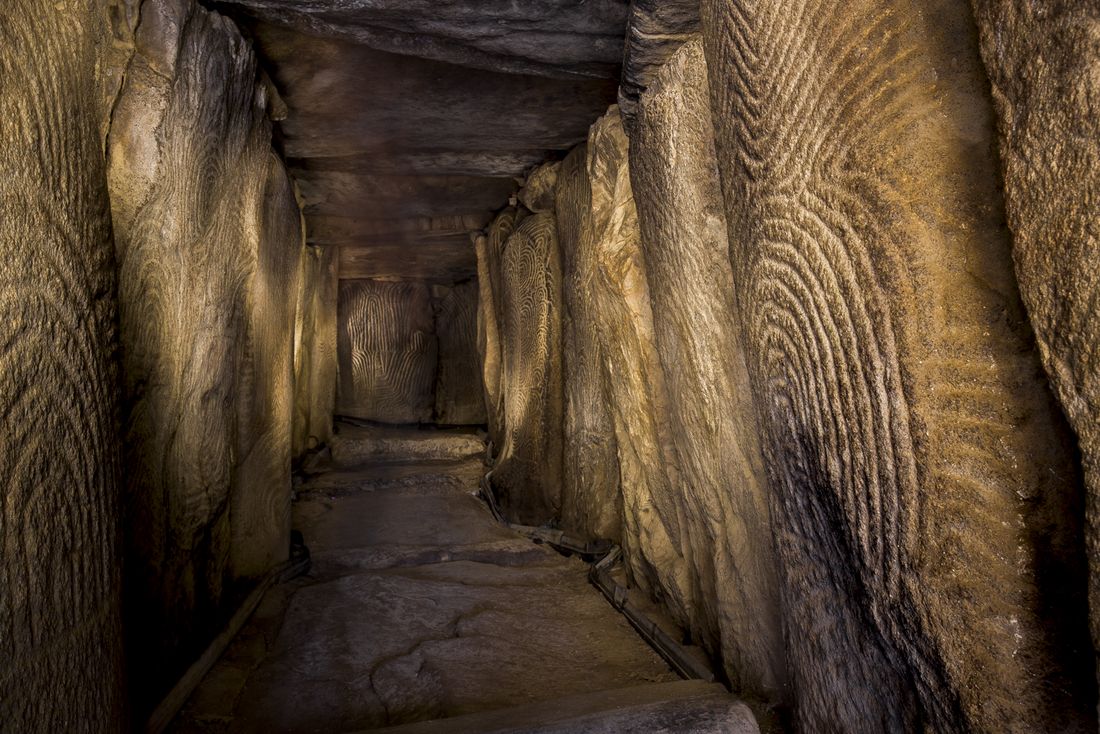
The Neolithic societies responsible for the megaliths in the region had long-distance trade links – as evidenced by the presence of beads made of variscite (a mineral to be found in northern Andalusia), and polished axe-heads made from Alpine stone. These items were discovered in various graves and deposits in this area.
Moving landscapes
Following slopes or watercourses, interacting with the coast, and establishing visual and structural continuity with each other, megalithic monuments reflect a way of organising the landscape, revealing how it was perceived and interpreted by Neolithic peoples.
Today, the landscape these peoples experienced has changed, due in part to rising sea levels, with the formation of the Gulf of Morbihan submerging certain sites. Urban development and the arrival of new vegetation during the last century have also altered the way we now see this megalithic landscape; some of the changes are perceptible within a single lifetime.
To continue to preserve this landscape heritage for future generations, the sites themselves and their environment now need to be protected, amid social and environmental challenges.
Megaliths along the coasts and on the foreshores bear witness to a close connection with the sea. Others are now accessible only to divers and marine life, thus demonstrating how sea levels have risen since the Neolithic era.
International recognition
The Morbihan megalithic heritage is exceptional, with a distinct set of characteristics that make it unlike anywhere else in the world. With this in mind, the Paysages de mégalithes association has been working on the UNESCO World Heritage application for the Carnac and Banks of the Morbihan megaliths since 2012. The association brings together local authorities, public bodies, and non-profit associations with an interest and involvement in the application process.

For more information about the application and the outstanding universal value of this Property, you can visit the rest of our website and follow us on social media (Instagram and Facebook @PaysagesMegalithes).

Paysages de mégalithes thanks all those who agreed to tell their stories.
Partners
Audio accompaniment designed by Paysages de Mégalithes.
In partnership with the Association Escales Photos Mor Braz festival and Les Glaneurs de mémoires.
Funding
Région Bretagne, Département du Morbihan and communauté de communes Auray Quiberon Terre Atlantique
Design and production
Story recording: Les Glaneurs de mémoire
Structure, graphic design, and sound editing: Twelve Solutions
Installation design: Michel Cousin
Structure construction : Léon l’enseigniste
Texts and coordination: Victoire Dorise and Pauline Meunier, Paysages de mégalithes
Translation of the texts into Breton : Ti Douar Alre
Translation of the texts into English: Emmanuel Sombsthay

